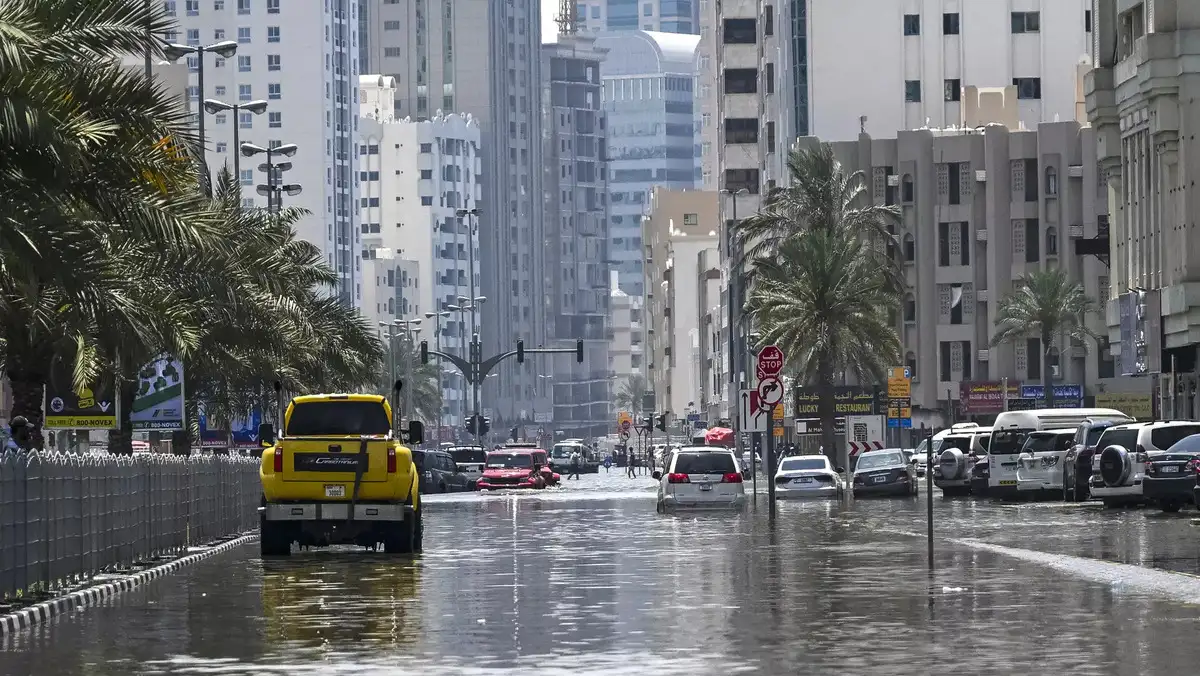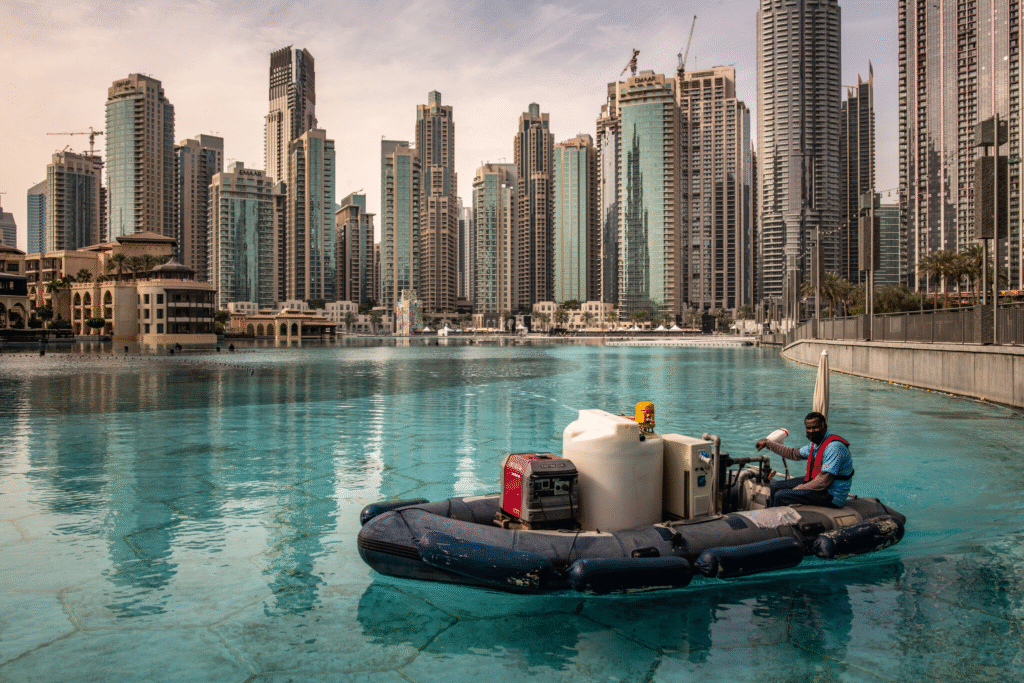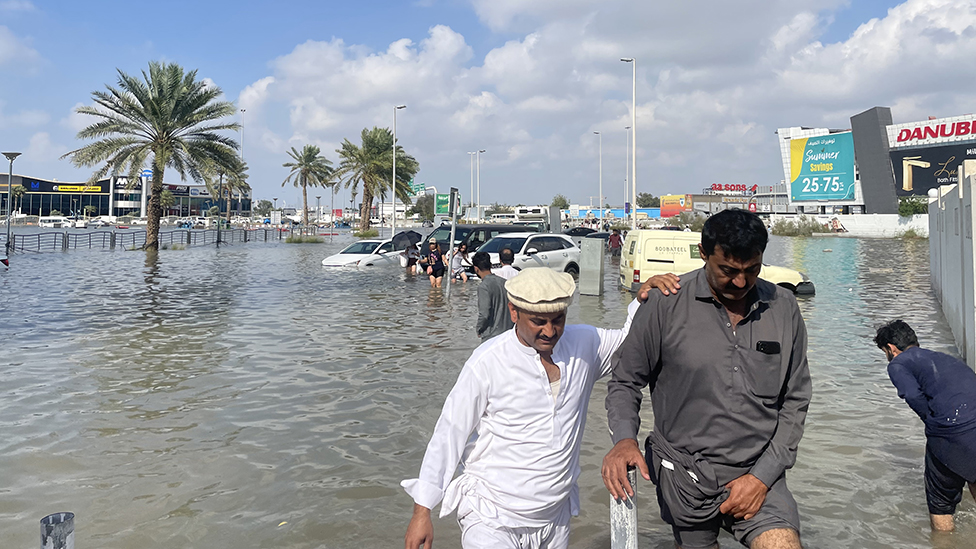Now Reading: UAE’s Shocking Technology: Creating Artificial Rain to Tackle Water Crisis 2025!
-
01
UAE’s Shocking Technology: Creating Artificial Rain to Tackle Water Crisis 2025!
UAE’s Shocking Technology: Creating Artificial Rain to Tackle Water Crisis 2025!

In the middle of the hot Arabian desert, where rain is rare and summers are long, the United Arab Emirates (UAE) is doing something extraordinary. The country is using modern technology to make its own rain — a process called “rain enhancement” or “cloud seeding”.
But how does this work? Why is the UAE doing this? And what does this mean for the future? Let’s find out.
What Is Rain Enhancement?

Rain enhancement, also known as cloud seeding, is a scientific method where planes fly into the sky and release tiny particles into clouds. These particles are usually made of salt crystals or silver iodide.
These small particles help the water droplets in the clouds to join together, become heavier, and fall to the ground as rain. This technique is not new, but the UAE is one of the few countries in the world that uses it regularly and on a large scale.
Why Is the UAE Making Artificial Rain?
The UAE is one of the driest countries in the world. The country gets less than 100 millimeters of rain per year. That’s almost nothing compared to places like Europe or America.
Water is very important in the UAE — not just for drinking but also for farming, cleaning, and keeping the cities cool. The growing population and industries in cities like Dubai and Abu Dhabi need a lot of water. But natural rainfall is not enough.
To solve this water problem, the government started investing in rain enhancement projects. The idea is to make the clouds release more rain whenever possible, especially during the cooler months when natural clouds form.
How Does Cloud Seeding Work in the UAE?
The National Center of Meteorology (NCM) in the UAE leads the country’s cloud seeding operations. Here’s how they do it:
- Weather experts monitor the sky using satellites, radar, and other tools to find clouds that are likely to produce rain.
- Special aircraft equipped with flares filled with salt or other chemicals are sent into these clouds.
- The planes release the particles into the cloud, which causes tiny water droplets to stick together and become bigger.
- When the droplets get heavy enough, they fall as rain.
This method is done mostly during the summer and autumn seasons, when clouds are naturally more common over the UAE.
Is Rain Enhancement Effective?
According to the UAE’s weather authorities, cloud seeding has increased rainfall by up to 30% in some cases. While this cannot completely solve the country’s water needs, it helps to boost water levels in dams and underground wells.
Scientists around the world are still debating how successful cloud seeding really is. Sometimes, the natural conditions of the cloud are more important than the chemicals used. However, in the UAE’s case, the government believes the technology is helping to make better use of the clouds they have.
Environmental and Safety Concerns
Many people wonder if this process is safe for the environment. The good news is that the UAE mainly uses natural salts like sodium chloride, which are not harmful to the environment. Unlike older methods that used silver iodide (which can build up in the environment), these modern materials break down safely.
But there are some challenges:
- Uncontrolled rain: In some cases, cloud seeding has led to unexpected heavy rain and flooding in city areas.
- High costs: Flying planes and operating this technology is very expensive.
- Limited effect: The method only works when there are already clouds in the sky — it cannot create clouds from nothing.
Future of Rain Enhancement in the UAE

The UAE is not stopping here. The country recently invested $15 million USD into research projects to make rain enhancement more effective and environmentally friendly. Scientists are testing new materials, like nanoparticles, that may improve the process.
One exciting experiment involved using drones to deliver electric charges to clouds, helping them form rain without using chemicals at all. If this works, the UAE could lead the way in a cleaner and cheaper method of artificial rainmaking.
Why Is the World Watching the UAE?
Many countries in the world, such as China, India, and the USA, are also interested in rain enhancement. As the global climate changes, dry areas are becoming drier, and water is becoming a precious resource.
The UAE’s success could be a model for other countries suffering from droughts and water shortages. If this technology becomes cheaper and more reliable, it might help millions of people around the world.
Conclusion: The Desert That Makes Its Own Rain
The UAE’s rain enhancement program shows how technology and science can help solve one of the biggest problems faced by desert countries — lack of water.
While challenges remain, the progress made so far has already changed how people think about weather control. In the future, making rain on demand could become common in many parts of the world.
For now, the UAE continues to lead the way in turning dry skies into rain clouds — one flight at a time.
Read More:- Shobha Realty Launches Its Most Luxurious Project Yet—Full Details Inside 2025




















